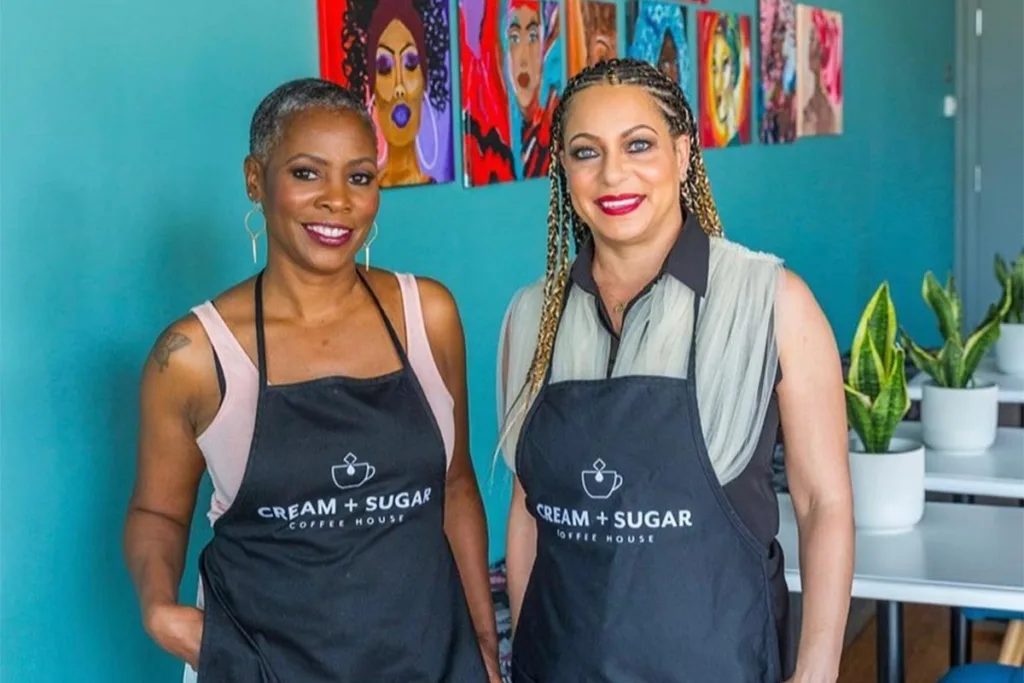34 free and low-cost advertising ideas for businesses on a budget
As a small business owner, you’re likely careful about where and how you invest your marketing budget, aiming to make the biggest impact with the least amount of dollars. While the term “advertising” might conjure images of expensive Super Bowl commercials and five-story-tall billboards in Times Square, there are actually many ways to get your brand in front of customers for little to no money. Read on for 34 advertising and promotional ideas to help you achieve your business goals on a budget.

What’s the difference between marketing and advertising?
Marketing is the overarching process of defining a business’s products and services, how and where to promote them, and what the price will be. Advertising is one element under the umbrella of marketing in the “promotion” category, which helps businesses build brand awareness and communicate with their target audiences.
Traditionally, advertising is defined as promotion through paid channels. However, the digital marketing age has allowed the term “advertising” to slowly become more synonymous with any type of promotion, free or paid. Because the terms are used interchangeably in the modern day, the below list of ideas will include both free and paid advertising and promotion strategies small business owners can use to reach their ideal customers and optimize their marketing efforts, whether you have a storefront or are strictly ecommerce.
34 free and low-cost advertising ideas
All businesses want to maximize their advertising efforts while minimizing costs. From free online business profiles to networking and partnership opportunities, these free and low-cost advertising ideas can help generate both brand awareness and conversions for your business.
Digital promotion strategies
1. Invest your time in content marketing
Adding content marketing to your marketing plan can help your target audience not only find you but also begin to build trust in your brand. With content marketing, you’re not going for the hard sell—you’re building a library of authoritative, creative, and/or helpful content that provides value to your potential customers. This can look like writing a blog, white papers, or case studies, creating video tutorials or testimonials, or hosting a podcast.
2. Create a blog
Blogging can give you more visibility on search engines and allow you to rank higher for terms (keywords) your customers search. Your blog can house your business updates, exciting news, testimonials, and authoritative articles on your industry to encourage customer engagement.
3. Start a podcast
If you have the time to be consistent, podcasting can help you appeal to a wide audience looking for information on your industry. It’s a great way to show that you’re an expert in your area and humanize your business to your target audience.
Related:
4. Be a guest on a podcast
If you don’t have time for your own podcast, consider being a guest on someone else’s. Start by finding an existing podcast that discusses topics related to your industry. Then, contact the showrunner to see if you can join an episode. Not only will you be able to reach more ears, you could also develop a valuable relationship with other businesses who can feature you on their platform again or refer customers to you.
5. Host a webinar
Webinars or other online events, like virtual meetings or summits, are effective marketing tools that can help you show your authority in your industry. You can talk about the industry at large or about how your product or service in particular can help solve your customers’ problems. Webinars can also help you build your email list so you can send your email campaigns and newsletters to a growing audience.
Related:
- Yelp’s Black in Business Summit
- Yelp’s Women in Business Summit
- Success on Yelp: Free and Paid Tools
6. Record helpful videos
Video tutorials show customers you care about their problems and genuinely want to help. Giving advice for free about how to make small repairs, judge the quality of an item, or take care of household appliances will provide value to customers and keep you top of mind when they require more complex services or quality products in the future.
7. Claim your Yelp Business Page
Over 76 million people every month visit Yelp looking for local businesses, and 57% of users contact a business they researched on Yelp within a day. Claiming your free Yelp Business Page not only gets you in front of millions of people, it helps you establish an online presence and reputation, which are key to building a loyal customer base.
Get found for free
Show up for any of the millions of customers on Yelp searching for a business like yours.

8. Respond to your online reviews
Customer reviews are free insights into what your business is doing well and what could improve. By responding to reviews, you can engage with your customers on a deeper level and provide excellent customer service, which will be seen by other potential customers.
Related:
- How to get Yelp reviews without asking
- Getting into the minds of your customers: What inspires them to leave reviews?
- Tips from a top marketer: what to focus on when responding to reviews
9. Claim free advertising credits
Many sites offer advertising promos or credits so businesses can give their platform a try. Take advantage of these offers to explore each site’s functionality and the pros and cons for each. With Yelp Ads, business owners can advertise their business information, service offerings, and/or product listings to millions of Yelp consumers. If you’ve been thinking about advertising, Yelp Ads is simple to set up and customize. Select businesses can claim free Yelp Ads promo credits to jumpstart their advertising goals and get their businesses in front of more leads.
Get more leads
Reach more customers with placements on search and competitors' pages.

10. Implement search engine optimization tactics
Search engine optimization (SEO) means improving your online content (such as on your business website) so it appears higher on search engines and boosts overall performance (think: website traffic). By increasing page speed, reducing file sizes, and hyperlinking to reputable sources, you’ll not only rank higher in search but also encourage visitors to remain on your website for longer.
Related: The beginner’s guide to small business SEO
11. Earn backlinks to improve SEO
Receiving backlinks (links from other sites to your own) can also significantly improve SEO. If you link to other sites on your website or blog, let them know. If your business is an authority on a subject, other businesses could reciprocate by linking to your website or sharing your content on one of their social media platforms. When you have more quality links pointing to your site, search engines will evaluate your content as more valuable.
12. Improve your local SEO strategy
Local SEO helps you target an audience within a certain geographic area, like your city or surrounding community. Whenever someone searches for “[business] near me,” you want to be at the top of that list.
13. Optimize your blog SEO with keywords
Researching terms local customers search for will help your blog be more relevant to search engines. For example, a dental office could drive traffic to its site by writing articles on topics like: “how often should you get a teeth cleaning?” or “best oral health tips.”
Use a free keyword research tool to discover terms with high search traffic that are easy to rank for on search engines. Make a list of these terms, then write one high-quality article about each. Aim to post at least one article per week. Search engines will reward you for consistently posting content.
14. Employ email marketing
With estimated revenues of $10 billion worldwide, email marketing is a highly effective marketing channel that helps build lasting relationships with current customers and engage potential customers.
You can start your email marketing program by building an email list. One way to do this is by offering customers an in-store incentive—like 10% off their purchase—in exchange for signing up to receive emails. Also consider adding a sign-up form with a call to action on your website—for example, “Join our email newsletter for weekly promotions.”
From there, you can send your subscribers email marketing campaigns that range from weekly promotions to monthly newsletters, updates on new products, and links to your blog content. Monitor the performance of your emails and adjust your content depending on what your customers find valuable.
15. Start a newsletter
Sending newsletters to your customers is a great way to stay connected with your audience and deliver them content they’re interested in. This process creates brand recognition and generates value for your business. Sending timely discounts and information will help keep you top of mind for customers looking for your products or services.
16. Create infographics
Combining accurate data, statistics, and/or quotes in a visually appealing way can attract more potential customers and help your brand build authority and trust—you’ll also have new content to share on social media, your blog, and in your newsletter. Use free resources like Canva, Visme, or Adobe Express to make your content pop and websites like Statista or data.gov for data to use if you don’t have your own.
Social media promotion ideas
17. Post social media content
Sharing interesting and timely content on your social media accounts, like industry studies, seasonal sales, and your own blog articles, can help you strengthen your online presence and encourage potential customers to engage with your brand. Regularly showing up on social media users’ feeds creates a sense of familiarity and trust, resulting in more eyes on your business and more potential leads. Use relevant hashtags so your target audience can find you more easily.
Related:
- Why is social media important for small businesses?
- 8 smart social media marketing tips for small businesses

“We’re not just trainers, we’re humans first. That’s why it’s really important that when I show up online, it’s as myself—to humanize that trainer-client relationship.”
18. Engage with other social media users
Building an online community requires interacting with other users on social media platforms and apps. Reply to comments on your social media posts, answer questions, and run polls to show potential customers their voices and feedback matter to your business. Also consider tagging loyal, existing customers to build goodwill with your audience and authenticity for your brand.
19. Re-share user-generated content
If you have loyal customers who are posting about your business, re-share their posts to magnify the excitement for your brand. This shows customers you’re paying attention and care about their engagement. Plus, there’s no effort on your part, and potential customers can see proof of your happy, existing customers.
20. Repurpose content
If content marketing is part of your small business marketing strategy, let the content you’ve already created work harder for you by repurposing it for social media. Grab intriguing stats from white papers or quotes from customer testimonials to feature in posts with little extra effort on your part.
Networking strategies
21. Network with professionals on LinkedIn
LinkedIn’s audience is primarily professionals interested in networking with other professionals and business owners. This is particularly helpful when looking to build mutually beneficial partnerships with other local businesses, such as non-compete businesses with whom you could share referrals. For instance, a landscaping company could refer clients to a pest control company and vice versa.
Engaging with content from other people—such as commenting on and sharing their posts—as well as publishing links to your own blog can help boost your pool of potential clients and/or partners.
Related: How to Build a Strong, Supportive Network and Choose Collaboration Over Competition
22. Network locally
Attending networking events and getting face-to-face time with other professionals in your industry and community can be incredibly valuable for your business. Not only can you meet potential business partners, but you can also volunteer for public speaking opportunities to establish yourself as a thought leader in the industry.

Photo from Cream + Sugar Coffeehouse
“For Black women entrepreneurs, it is so hard to sometimes break into the market. We’re going to have these barriers. And most of the time, in order to navigate those [barriers], it’s really about your network. It’s about the relationships you have built, the relationships you can cultivate.”
Media coverage
23. Contact local media outlets
If you’re holding a special event or just wrote an authoritative article on an industry topic, check in with your local media outlets to see if they have space to cover your event or feature you in their publication. You’ll gain exposure, and your local news station or paper will have an interesting story for its audience.
Low-cost promotion ideas
24. Create a website
Although you can create a website for free, paying a small domain fee for a custom URL will make your website appear more professional and easier for customers to remember. You can expect to pay a minimum of $12.99 per year for a .com domain name.
25. Increase referrals by incentivizing customers
Referral programs that offer material or monetary incentives encourage existing customers to advertise on your business’s behalf through word of mouth. For example, an auto repair shop could encourage referrals by offering a free oil change or discounted services. Building loyalty with current customers can help you earn new business.
26. Start a loyalty program
New customers are more expensive to acquire and spend less money than loyal regulars. To increase customer retention, consider implementing a loyalty program that encourages repeat sales. For example, you could offer free or discounted services after a certain number of purchases or donate a specified amount to a local charity with ties to the community. When you build a charitable angle to your loyalty program, it can be an effective way to connect with your customer base on an emotional—not just monetary—level.
27. Run social media contests or giveaways
Increase engagement and brand awareness on social media through contests or giveaways. Incentivizing users to engage with your business can help re-engage previous clients and appeal to new ones at the same time. Ask your followers to share, comment, and tag their friends on your post. Then, select a winner and tag them in a later post celebrating the results.
28. Hold a business card drawing
Encouraging customers to drop their business card into a bowl on the counter to enter a monthly prize drawing is a great way to get contacts for your email list and build buzz for your business. Offer a small discount at your store or collaborate with other local businesses to make the prize more enticing. Then, announce the winner in your monthly newsletter and encourage subscribers to continue entering for their chance to win.
29. Host in-person classes or events
For the cost of materials and your time, you can host offline events in your brick-and-mortar location or a rental space. If your business is hands on, give customers a demonstration and let them try their hand at the craft. If you sell products, give an educational session about their benefits, then let attendees try them for themselves. Facilitating a fun and interactive event will help generate word of mouth and encourage new business.

“When you’re in a highly competitive media market like New York, it costs a lot of money to advertise. It’s very hard to make an impact because the market is so expensive. So what you really have to do is make a lot of noise. And you gotta make noise in different ways and find ways to make noise that are impactful.”
Cost-effective digital advertising ideas
30. Yelp Ads
With Yelp Ads, your business is displayed in a number of key places on the site and app, including above or below relevant search results in the “Sponsored Results” sections and on competitors’ pages. This means users are more likely to find you when searching for the products or services you offer—and more people finding you means more leads for your business. Businesses that use Yelp Ads get 4x more leads than those who don’t. Because the ads are pay-per-click (PPC), you’ll only pay when a lead clicks on your ad; impressions are free.

“Over the last nine years, Yelp has helped me transform my business and grow revenue from $500k in my first year to over $20 million in 2022.”
31. Social media ads
If your target demographic is on Facebook, Instagram, or TikTok, it might be worth it to look into starting ads on those platforms. These services allow you to reach a precise audience and track your ad performance so you can adjust your advertising strategy as needed.
Traditional (paid) advertising ideas
32. Billboards
Billboard costs vary due to geographic location, size, and estimated exposure, so if you’re located in a dense metropolitan area, the cost might outweigh the benefits. Still, billboard advertising is effective, especially when paired with digital marketing strategies. As you promote your business online, be sure to keep your messaging and branding (including logo, font, colors, and images) consistent. Then, when potential customers see your brand out in the wild, they’ll be able to place it immediately and start to build recognition.
33. Newspaper ads
If your target audience regularly reads the newspaper, consider paying for ad space in your local edition. Depending on the demographics you target, advertising in black and white could get more of the right eyes on your business.
34. Radio ads
People of all ages listen to the radio, even in the digital age. Try coming up with a catchy slogan or jingle for your business that fits your brand and speaks to your target audience. The more your radio ad plays, the more likely people are to remember it.
Grow your customer base with these free and low-cost advertising and promotion ideas
Spending a fortune on promoting your business isn’t necessary to see results. There are plenty of free and low-cost advertising and promotion ideas that allow you to maximize your marketing budget, find new customers in person and online, and build strong relationships with existing clients and other businesses.
All of these strategies might not necessarily fit your business exactly, so don’t be afraid to experiment with one or two when starting out before moving on to another. Next, explore even more low-cost ways to promote your business and free ways to advertise your business online.